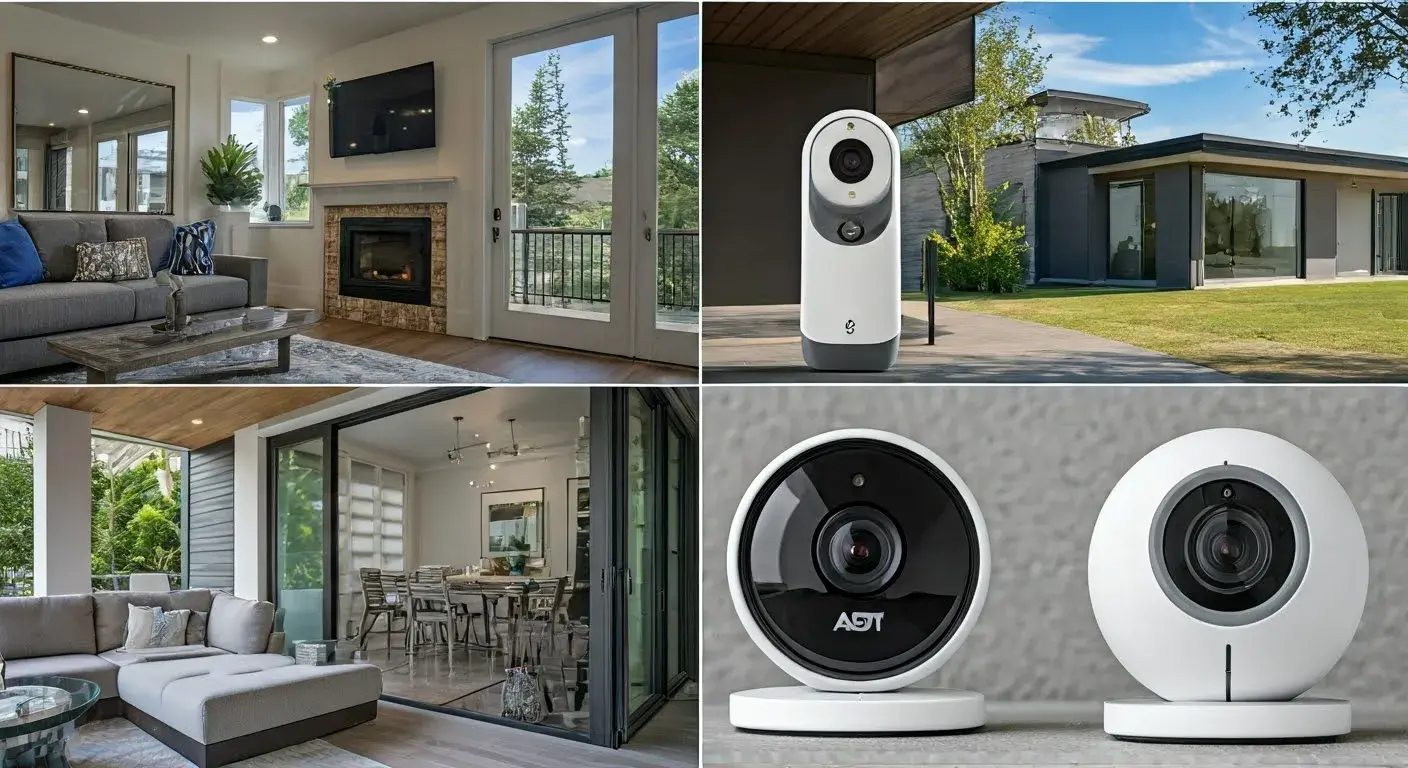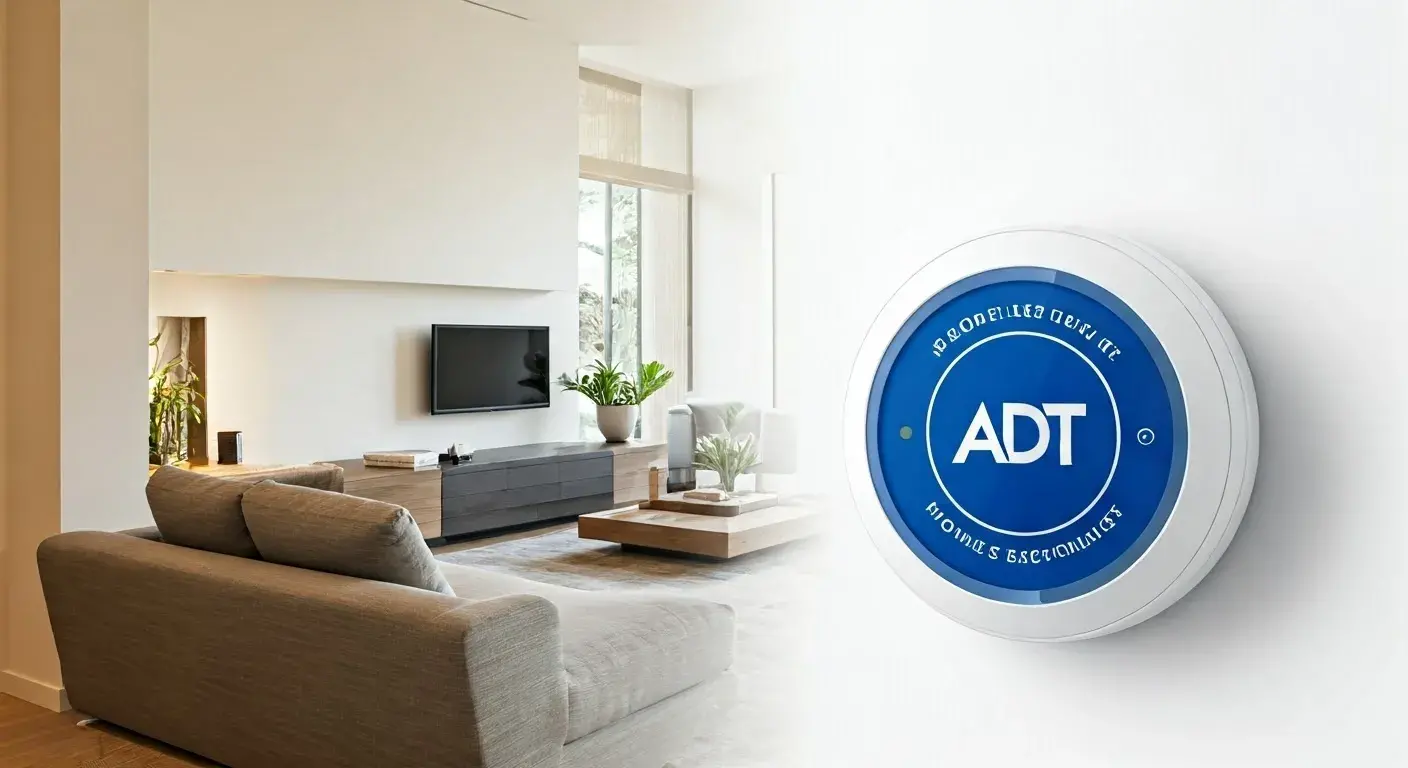If you have an ADT alarm in your home or business you would be aware of the security and comfort that you enjoy when this security system is in the right condition. However, an alarm panel beeping because of a fault or a problem with the system can be extremely annoying. The constant ringing may interfere with your sleep, conversations, focus, or any part of the environment where the beeping sound is heard. Fortunately, there are several DIY ways you can handle a beeping ADT alarm and fix the problem without having to wait for a service call or a technician to arrive.
Why Does Your ADT Alarm Keeps Beeping?
The first step is to get to know the exact reason why your system is beeping so that you can be able to deal with that issue. Common triggers for a beeping alarm panel include:
- Low backup battery. Most alarm panels are equipped with a backup battery in the instance of ordinary electrical power supply interruption. A low battery is shown when the panel is on by producing a beeping sound; this is a sign that the battery needs replacement.
- Sensor or zone fault This type of fault is comprised of a single sensor or an entire zone that has been disabled due to one general fault. It beeps if one of the motion detectors, door/window contacts, smoke detectors, or other sensors you installed have a technical issue. This is caused by areas that do not ‘power up’ when arming the system properly A good example is if my house is divided into different areas, I’ll expect some of these areas to trigger the alarm when I set it but they don’t. Look at the digital alarm panel to determine which zone has been triggered.
- High levels of Carbon Monoxide (CO). If you have CO detectors interfaced with the alarm, then the beeping sounds will indicate that there is a high concentration of CO gas.
- General system issue. Less frequently, the problem may come from the controller panel itself and can include any issues with the configuration of the panel which may prompt the alarm beeper.
Verify Arming Status
However, ensure that the alarm panel that has been disarmed is indeed unarmed to avoid any form of distortion. If armed armed, you will not be able to address beeping matters. The arming status is indicated by a red and green light on the event of the keypad of the alarm. To disarm, please enter the user passcode. The arming light should shut down if it had been armed adequately. Forcible arming whenever the alarm zones are still blamed will also result in beeping in most cases.
Resolve Low Backup Battery
In the case that the keypad is flashing or solid red and displays the word “battery,” then low auxiliary battery power is probably the problem. That little rechargeable battery inside the ADT alarm panel is connected to the main electricity source to power it constantly, to supply power in case of power outages, and to beep when low on charge. Fortunately, replacing this battery yourself is a very straightforward fix:
- Purchase replacement. There will likely be a preferred manufacturer and model which has to be matched to what is already in place. This usually ranges from $15-30 in most places. For commercial panels, batteries commonly range from 12 volts 4 AH or 7 AH. Home panels usually use CR123A, CR2450, or AA NiMH rechargeable batteries most frequently.
- Power down system. Turn off the main power source of electricity on your circuit board and unplug all appliances in your house.
- Opened the panel and changed the battery. Once the power has been disconnected you can now go ahead and pop open the control panel box. Disconnect the old battery with the new replacement to be fitted into the slot firmly.
- Reboot and test the system. After placing the new battery, switch on the main power switch back to the ON position. The panel will turn off for a few minutes and the battery will recharge before the panel comes back on. After that, return to the property, roam within the premises, and ensure that all the zones and associated sensors are correctly reporting to the alarm system.
This basic battery exchange process should prevent your alarm from beeping if it continues to beeping. Check that the light at the bottom of your keypad that indicates battery status goes off as soon as it is charged from the electrical supply to an optimum level. If the light continues to flash, there may be other related problems associated with the real power connection, cables, or the alarm controller.
Identifying and correcting issues with the Sensor and Zone Faults
If the alarm panel beeps that typically means that one or more of your security system’s detection zones is having some sort of technical difficulties in reporting its status properly. This could mean anything from the movement sensors, and door/ window entry contacts to the glass break or shock detectors. Ideally, your alarm keypad LCD should show you which zone or device is causing the problem. Common sensor and zone troubleshooting steps include:
- Inspect connections. Make sure all your sensors are well secured in their accurate positions and check all cables for connection to the power source without any loose or damaged cables. They are zone faults and there are various causes of these faults, but one of them is faulty wiring.
- Check for interference. Induction from nearby electrical devices for example fan motors, fluorescent lights as well as transformers can in one way or the other hamper wireless sensor signals getting to your alarm panel. The last strategy is to eliminate the interference by switching off other electrical gadgets in the vicinity.
- Replace batteries. If your motion or entry detectors have batteries inside them and are wireless, then your problem is most likely depleting batteries. Replace with a brand new set with a special focus on the orientation. Battery life should indicate that wireless equipment should last 1-2 years on each battery.
- Test transmission strength. In cases where there are ongoing problems with specific devices that are connected via wireless interfaces, you should be able to access or perform tests on the strength of the alarm panel transmission with the menu options on the alarm panel. Low readings are considered levels that are recorded constantly; this means that the sensor should be placed closer to the receiver.
- Reset sensors. Many of the devices possess a small round button labeled as reset through which you can; reset back to the factory programmer’s setting and wipe off the codes that may be showing on the screen, helping you regain synchronization with the alarm panel.
- Call for repairs. While simple troubleshooting procedures can be easily followed, the more complicated sensor problems can be addressed by contacting the ADT system for expert help, Dial 800-ADT-ASAP to have your problems analyzed over the phone or a technician will be dispatched to fix the sensor problems that cannot be solved by the users.
CO warnings To address this, the following recommendations are proposed
In the event of high levels of gas and if the ADT alarm system interfaces with any Carbon Monoxide detectors in your home, the warning sound device for CO will emit loud beeping sounds within the centralized alarm panel until the danger is averted. To stop beeping from CO alarms:
- Silence alarm panel. The question is that pressing any button might mute the keypad for some time, which could hamper one’s understanding of where the threat lies.
- If possible, open the room where the flies were seen or suspected to have originated so that it can be aired to eliminate the flies. Open some of the windows and doors gently to ensure that there is enough supply of fresh air inside the house. Heating and cooling equipment, fireplaces, stoves, water heaters, and furnaces should be checked to identify where CO is generated. If the level of CO indicates hazardous conditions, the caller must dial the fire department immediately.
- Repair issues, and replace detectors. In cases where ventilation has effectively expunged the CO gas, thus addressing the core reason for alarm activation, the beeping, and the associated system should also stop as detector readings reduce to safe levels below the specified thresholds. Replace or reset the old CO unit that is giving false readings that are not in any way supported by your other warning devices.
I will then open the Alarm Panel and set the Restart and Update alarms.
When it comes to alarm panels that have beeping sounds with no signs of particular low battery or zone issues, these general malfunctions can be the reason. Power cycling along with firmware or configuration updates may clear problematic control panel malfunctions:
- Reset the electrical breaker. As stated for replacing the backup battery, locate and turn off the main power switch that provides power to your alarm controller before turning it back on.
- Push the reset button. Most of the panels have a small interior button marked reset which you can press before restoring power to the system to run software most of which can be booted from scratch to solve prior control problems.
- Check for panel updates. These may include system programming bugs or incompatibilities which are likely to cause a system to act irregularly hence displaying beeping. ADT can look for available firmware updates to download and implement to correct these control panel issues and that only takes several minutes of offline mode.
- Default and reprogram settings. If rebooting and software updates do not solve panel operation issues, in the last resort all programmed settings may be wiped out and the TouchMaster may be returned to its default settings in which the user codes and sensor/zone options should be reprogrammed again. This is very possible since backups enable the previous configurations to be obtained in cases where problems are mainly caused by flawed program commands rather than the electronics.
The Pest Controller should call an ADT Technician if some issues persist.
While many common causes of a beeping alarm panel can be resolved with straightforward battery replacements, sensor resets, or panel power cycling, more complex underlying issues may require professional support
- Mostly because of the destruction of control panel electronics. The actual failure of circuit boards, burnt-up resistors, or stale chips in the main alarm motherboard can cause electrical inconsistencies and beeping which cannot be alleviated through standard technical procedures.
- Damaged wiring connections. As with sensor disconnections, the main power supply, battery leads, and other cabling that feeds the alarm brain cause an electrical problem with malfunctioning leads. This is how exposed wire shorting connections often lead to the formation of control faults.
- Incompatible components. When adding sensors from other vendors, mixing the old with the newer ADT products, or having a bad config, devices that do not play well with each other will have a mean communication breakdown.
When these kinds of situations occur where the control board beeping cannot be turned off after every basic fix strategy is applied, dialing 800-ADT-ASAP starts professional help When necessary, the alarm may require a control board upgrade or peripherals since no configuration works, new parts are required or an entire alarm swap since the alarm is too old for software/battery solutions available to the public.
What may be a small issue that requires addressing occasionally is the common occurrence of the ADT alarm sounds beeping at unwanted intervals affecting people’s lives and surroundings depending on the cause which could be power, sensors, or the main controller electronics. But identifying them correctly and then applying specific corrective error elimination techniques aimed at various fault types usually clears the headaches within minutes eradicating the interruptions before concluding that the entire alarm part needs to be replaced. If your security system soon begins to beep annoyingly, just follow these steps to diagnose the issue and not alert you again.






